Tending a summer vegetable garden is a great way to observe and understand plant diversity. Note the growth form, color and texture of leaves, the flower color and how the fruits and vegetables develop on each plant. Connecting with garden veggies provides an opportunity to learn about similar, related wild plants.
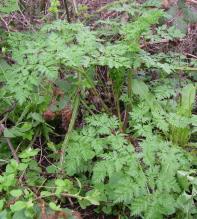 Carrots are in the same family (Apiaceae) as parsley, fennel and celery. Outside the garden, a dangerous relative grows as a common weed. The feathery leaves of poison hemlock look like carrot tops. Identify the hazardous species by the red at the base of the stem – a reminder of “Socrates’s blood” (as the philosopher chose to die by drinking hemlock tea!)
Carrots are in the same family (Apiaceae) as parsley, fennel and celery. Outside the garden, a dangerous relative grows as a common weed. The feathery leaves of poison hemlock look like carrot tops. Identify the hazardous species by the red at the base of the stem – a reminder of “Socrates’s blood” (as the philosopher chose to die by drinking hemlock tea!)
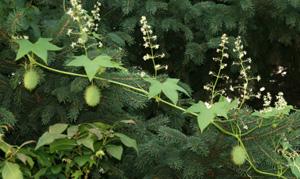 Cucumbers are in the gourd family (Cucurbitaceae) with other summer garden favorites: melon, squash, pumpkin and zucchini. The vines and curling tendrils of garden cucumbers weave up and over bamboo trellises. A wild cucumber plant – commonly called “manroot” – thrives outside the veggie garden gate, climbing into willow and oak branches, creating a dense tangle. The wild cucumber fruit is a ping-pong sized green ball with long spines. It is not edible.
Cucumbers are in the gourd family (Cucurbitaceae) with other summer garden favorites: melon, squash, pumpkin and zucchini. The vines and curling tendrils of garden cucumbers weave up and over bamboo trellises. A wild cucumber plant – commonly called “manroot” – thrives outside the veggie garden gate, climbing into willow and oak branches, creating a dense tangle. The wild cucumber fruit is a ping-pong sized green ball with long spines. It is not edible.
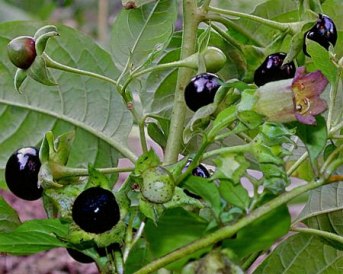 Tomatoes share a plant family (Solanaceae) with potatoes, eggplant, chili and sweet peppers. Outside the garden, get to know its wild, weedy cousin the “deadly nightshade”. Both plants grow 3-5 feet tall with alternate leaves and tiny pinwheel flowers. While tomatoes have yellow and white flowers, these nightshades have blue or deep purple flowers. Instead of plump, juicy tomato fruit, the flowers develop into small, dark poisonous balls.
Tomatoes share a plant family (Solanaceae) with potatoes, eggplant, chili and sweet peppers. Outside the garden, get to know its wild, weedy cousin the “deadly nightshade”. Both plants grow 3-5 feet tall with alternate leaves and tiny pinwheel flowers. While tomatoes have yellow and white flowers, these nightshades have blue or deep purple flowers. Instead of plump, juicy tomato fruit, the flowers develop into small, dark poisonous balls.
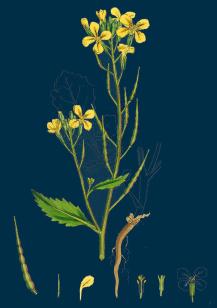 Kales, broccoli, cauliflower, cabbage, Brussels sprouts, radish and turnips are all members of the mustard family, Brassicaceae. Outside the garden, wild mustard and radish grow across fields. Another wild cousin, watercress, is common in our local creeks.
Kales, broccoli, cauliflower, cabbage, Brussels sprouts, radish and turnips are all members of the mustard family, Brassicaceae. Outside the garden, wild mustard and radish grow across fields. Another wild cousin, watercress, is common in our local creeks.
A few more garden to wild plant links: Snap peas and green beans (Fabaceae) are closely related to wild lupine, vetch and broom. Cultivated spearmint and sage (Lamiaceae) are cousins to wild yerba buena and hedgenettle. Artichokes are in a family with summery sunflowers (Asteraceae). Artichokes relatives are those thorny and omnipresent thistles making crossing a field a scratchy challenge.
Strawberries and raspberries are veggie garden perennials in the rose family (Rosaceae). Delicious, wild cousins include thimbleberry, California blackberry, and wood strawberry. California and wood rose grow along the trail. Many fruit trees are also in this family – note the similarity of flowers on apple, pear, cherry, plum, peach, apricot and almond trees.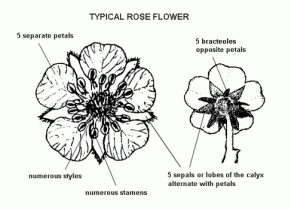
In the garden and in the wild, get to know your plants and enjoy the long, sweet days of summer.
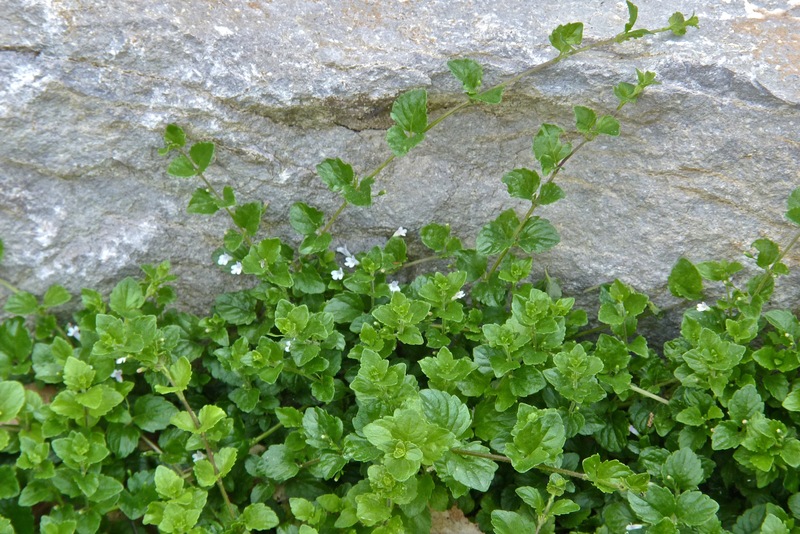
Leave a comment